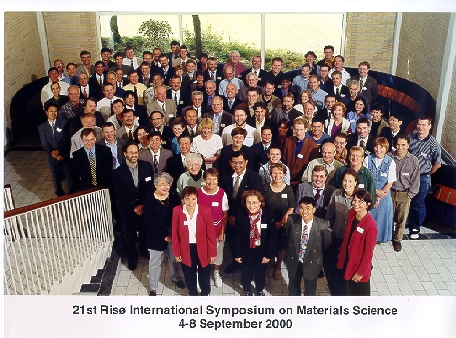
Mechanical alloying involves the severe deformation of mixtures of powders until they form the most intimate of atomic solutions. Inert oxides can also be introduced to form a uniform dispersion of fine particles which strengthen the consolidated product. Significant quantities of iron and nickel-base alloys with unusual properties are produced commercially using this process.
The total true strain during mechanical alloying can be as large as 9; there is proof that this leads to mixing on an atomic scale and to the development of a uniform grain structure which is submicron in size. The large stored energy, approaching 1 J/g, ought to make it easy to induce recrystallisation, but in practice the alloys fail to recrystallise except at very high temperatures close to melting. On the other hand, the recrystallisation temperature can be dramatically reduced by a small additional deformation prior to heat treatment. When recrystallisation does occur, the grains that evolve can be enormous and anisotropic in shape. In some cases, the principal growth direction can be controlled by applying thermal gradients; in other cases that direction obstinately remains parallel to the extrusion direction, irrespective of the nature of the heat treatment. These and other anomalous aspects of the recrystallisation behaviour of these remarkable materials are assessed and discussed in the context of applications.
21st Riso International Symposium on Materials Science, eds N. Hansen, X. Huang, D. Juul Jensen, E. M. Lauridsen, T. Leffers, W. Pantleon, T. J. Sabin and J. A. Wert, published by Riso National Laboratory, Denmark, 2000, pp. 15-28.

| Superalloys | Titanium | Bainite | Martensite | Widmanstätten ferrite |
| Cast iron | Welding | Allotriomorphic ferrite | Movies | Slides |
| Neural Networks | Creep | Mechanicallly Alloyed | Theses | Retained Austenite |
| PT Group Home | Materials Algorithms |

|

|